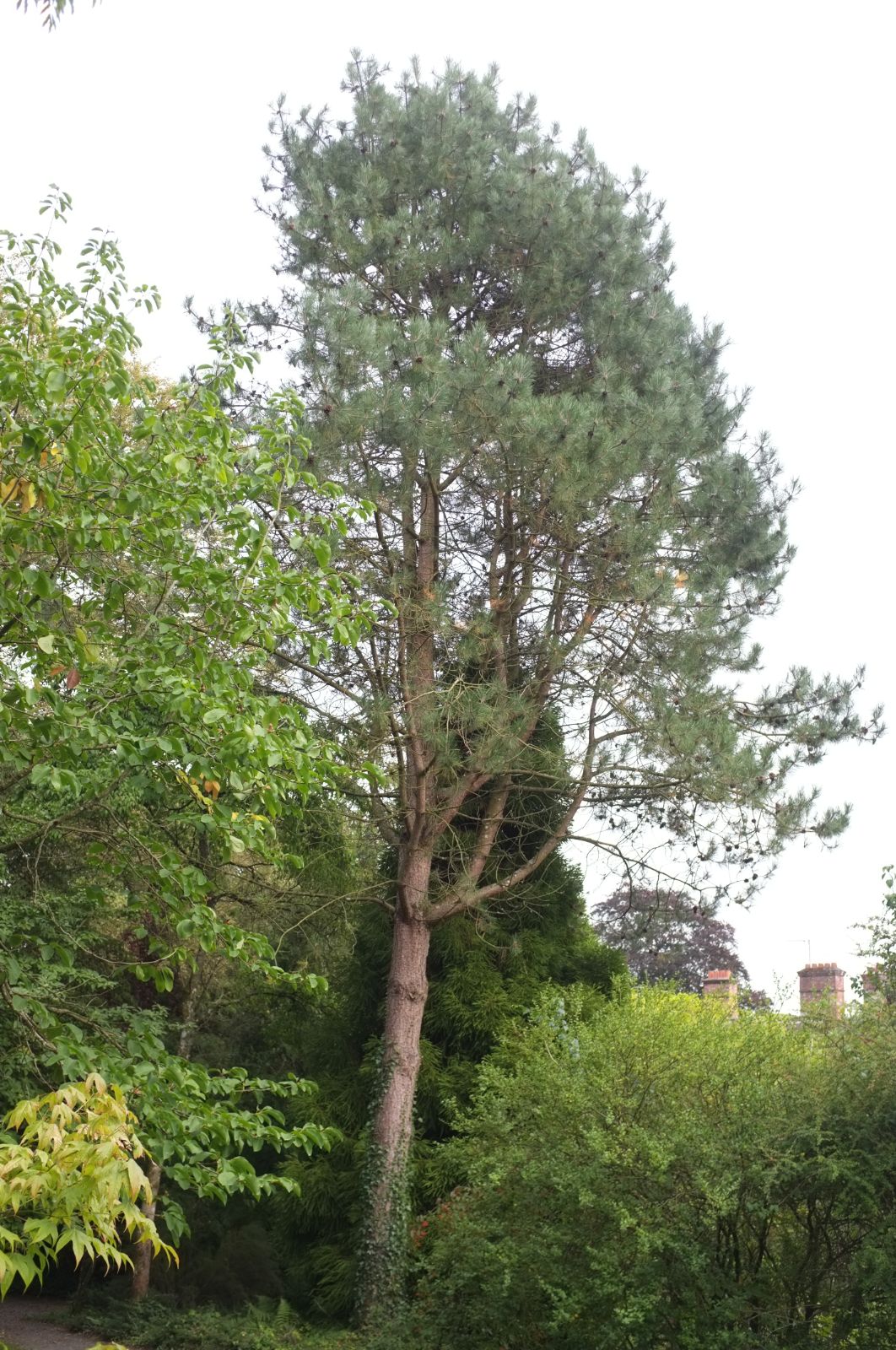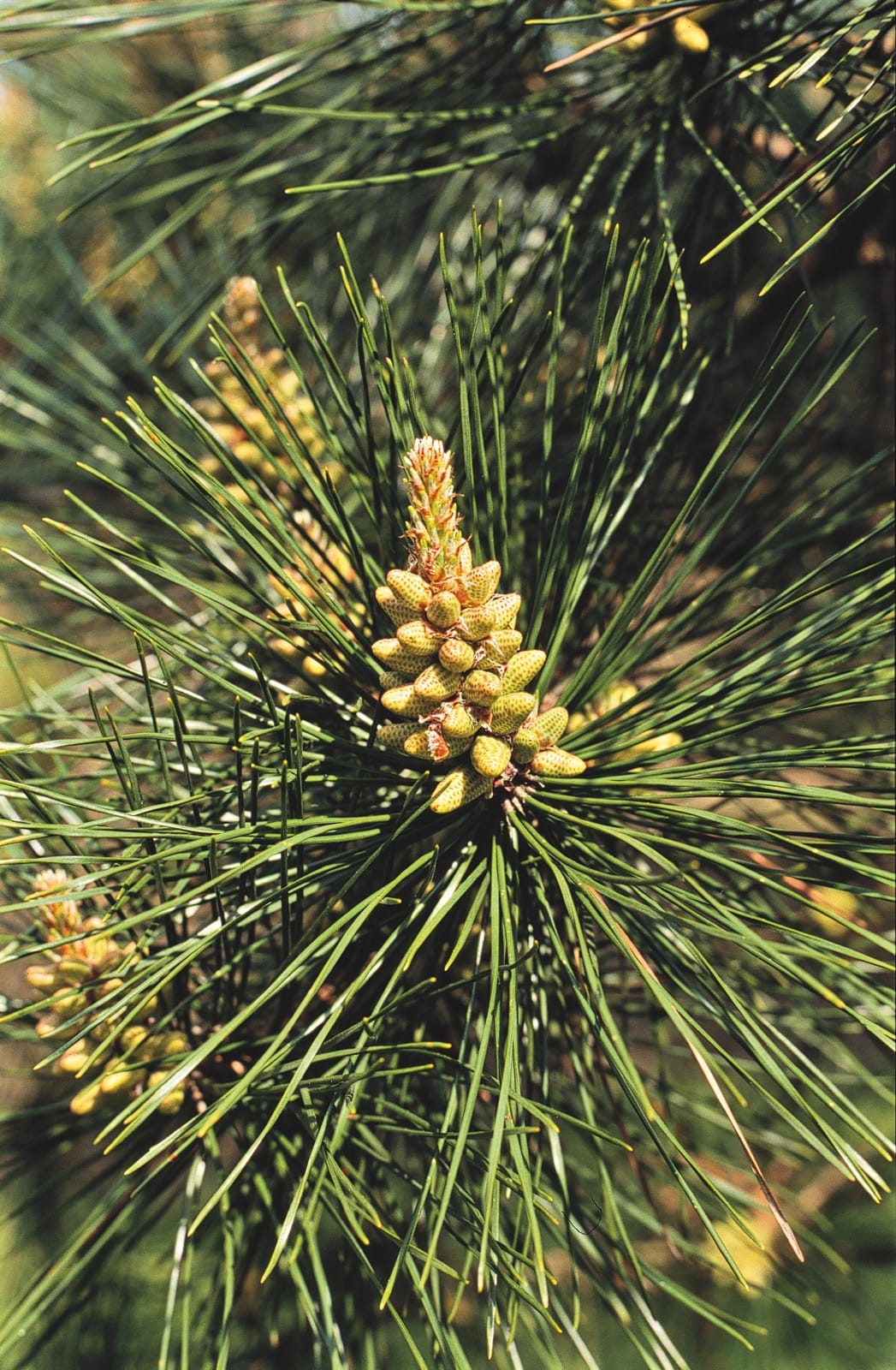Pinus tabuliformis
Credits
Article from Bean's Trees and Shrubs Hardy in the British Isles
Article from New Trees by John Grimshaw & Ross Bayton
Recommended citation
'Pinus tabuliformis' from the website Trees and Shrubs Online (treesandshrubsonline.
Genus
- Pinus
- Subgen. Pinus, Sect. Pinus
Common Names
- Chinese Pine
Synonyms
- P. sinensis sens . Mayr, not Lamb.
- P. leucosperma Maxim.
- P. wilsonii Shaw
Infraspecifics
Other taxa in genus
- Pinus albicaulis
- Pinus arizonica
- Pinus armandii
- Pinus attenuata
- Pinus ayacahuite
- Pinus balfouriana
- Pinus banksiana
- Pinus bhutanica
- Pinus brutia
- Pinus bungeana
- Pinus canariensis
- Pinus cembra
- Pinus cembroides
- Pinus chiapensis
- Pinus contorta
- Pinus coulteri
- Pinus culminicola
- Pinus densata
- Pinus densiflora
- Pinus devoniana
- Pinus durangensis
- Pinus echinata
- Pinus edulis
- Pinus elliottii
- Pinus engelmannii
- Pinus eremitana
- Pinus flexilis
- Pinus gerardiana
- Pinus greggii
- Pinus × hakkodensis
- Pinus halepensis
- Pinus hartwegii
- Pinus heldreichii
- Pinus henryi
- Pinus × holfordiana
- Pinus hwangshanensis
- Pinus jeffreyi
- Pinus johannis
- Pinus koraiensis
- Pinus lambertiana
- Pinus leiophylla
- Pinus longaeva
- Pinus massoniana
- Pinus maximartinezii
- Pinus monophylla
- Pinus montezumae
- Pinus monticola
- Pinus morrisonicola
- Pinus mugo
- Pinus muricata
- Pinus nelsonii
- Pinus nigra
- Pinus oocarpa
- Pinus orizabensis
- Pinus palustris
- Pinus parviflora
- Pinus patula
- Pinus peuce
- Pinus pinaster
- Pinus pinceana
- Pinus pinea
- Pinus ponderosa
- Pinus pseudostrobus
- Pinus pumila
- Pinus pungens
- Pinus quadrifolia
- Pinus radiata
- Pinus remota
- Pinus resinosa
- Pinus rigida
- Pinus roxburghii
- Pinus sabiniana
- Pinus serotina
- Pinus sibirica
- Pinus strobiformis
- Pinus strobus
- Pinus sylvestris
- Pinus taeda
- Pinus taiwanensis
- Pinus teocote
- Pinus thunbergii
- Pinus torreyana
- Pinus virginiana
- Pinus wallichiana
- Pinus wangii
- Pinus yunnanensis
A tree up to 80 ft high in the wild; young shoots glaucous at first, afterwards dull yellow or brownish, not downy; bark fissured, grey tinged with pink or orange; winter-buds oblong-ovoid, pointed, 1⁄2 to 3⁄4 in. long, the scales closely appressed. Leaves densely set on the shoots, mostly in pairs, sometimes in threes, 3 to 6 in. long; basal sheath persistent, 1⁄4 in. long. Cones solitary, ovoid, up to 21⁄2 in. long, persisting on the branches several years.
P. tabuliformis is widespread in the mountains of China and descends to near sea-level in the plains of the north. It was introduced by Fortune from the neighbourhood of Peking in 1862, but the trees now in cultivation are from later reintroductions and mostly from seed sent from W. China by Wilson when collecting for the Arnold Arboretum. It is very rare in this country and of no ornamental value. An example at Borde Hill, Sussex, in Gores Wood, measures 52 × 21⁄4 ft (1974). It was identified as P. tabuliformis by A. B. Jackson, and was raised from seeds collected by Wilson in Korea, distributed as P. densiflora (W.8815). Others are: Bayford, Herts, in Bells Wood, 45 × 31⁄2 ft (1962); Edinburgh Botanic Garden, from Wilson 1369, 36 × 2 ft (1967).
P. tabuliformis was at one time known by the name P. sinensis, but the pine thus named by Lambert is P. massoniana, a species very rare in cultivation, and not treated here.
From the Supplement (Vol. V)
specimens: Borde Hill, Sussex, Gores Wood, 59 × 21⁄2 ft (1981); Edinburgh Botanic Garden, from Wilson 1369, 70 × 21⁄2 ft and, from W.1370, 52 × 31⁄2 ft (1985); Altyre, Moray, 66 × 3 ft (1985).
P. yunnanensis – The specimen at Kew measures 40 × 43⁄4 ft (1980), and there are others at Borde Hill, Sussex.
From New Trees
Pinus tabuliformis Carrière
(Subgen. Pinus, Sect. Pinus)
Chinese (Red) Pine
This species was described by Bean (B245, S381) and Krüssmann (K245). A key to the varieties, adapted from Fu et al. (1999c), is presented below. Pinus tabuliformis var. henryi is treated here as P. henryi (p. 603).
| 1a. | Trunk monopodial at the base, then branching to form a fan-shaped crown; China (Hebei, Liaoning) | var. umbraculifera |
| 1b. | Trunk monopodial, crown conical then flat-topped | 2 |
| 2a. | Bark dark grey; branchlets greyish yellow to greyish brown; China (Jilin, Liaoning), North Korea | var. mukdensis |
| 2b. | Bark pale grey, brown-grey or reddish grey; branchlets yellowish brown; China (Gansu, Hebei, Henan, south Jilin, Liaoning, Nei Mongol, Ningxia, Qinghai, Shaanxi, Shandong, Shanxi, Sichuan) | var. tabuliformis |
P yunnanensis Franch.
Synonyms
P. tabuliformis var.yunnanensis (Franch.) Shaw
var. mukdensis (Uyeki ex Nakai) Uyeki
This variety has dark grey bark (pale grey, brown-grey or reddish grey in var. tabuliformis) and more widely splayed needles than in the type. The branchlets are initially greyish yellow and then turn greyish brown (in the type they are yellowish brown). Fu et al. 1999c. Distribution CHINA: Jilin, Liaoning; NORTH KOREA. Habitat Wooded hills and mountains. USDA Hardiness Zone 5. Conservation status Not evaluated. Illustration NT622.
Pinus tabuliformis var. mukdensis has been grown at Kew since 1979, when plants were donated by the Arboretum of the Chinese Academy of Forestry in Beijing. The trees have done well and have reached 10 m in height, producing abundant cones, but though worthy specimens they are distinctly dull. Perhaps, as in var. tabuliformis, they will attain a picturesque old age. The taxon is also occasionally grown by specialist collectors, as at the Anthoine Pinetum in Belgium, but is rare. Wilson 8815, collected in Korea, also belongs to this variety, and specimens under this number are growing at several arboreta (M. Frankis, pers. comm. 2007).
Unlike the other varieties with monopodial stems, P. tabuliformis var. umbraculifera T.N. Liou & Q.L. Wang branches early, forming a fan-shaped crown (Fu et al. 1999c). This character may be induced by environmental factors, or the taxon may derive from horticultural selections, in which case a cultivar group name might be more appropriate (M. Frankis, pers. comm. 2007). It is not known to be in cultivation, but is of potential interest in ornamental horticulture.


